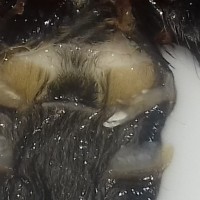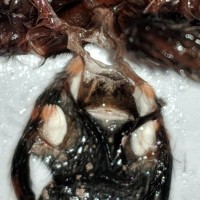Media information
- Category
- Spermathecae sexing (Molts)
- Added by
- Vanessa
- Date added
- View count
- 546
- Comment count
- 1
- Rating
- 0.00 star(s) 0 ratings
Image metadata
- Device
- SONY SLT-A57
- Aperture
- ƒ/6.3
- Focal length
- 50.0 mm
- Exposure time
- 1/160
- ISO
- 100
- Filename
- DSC01376-2.jpg
- File size
- 277.1 KB
- Date taken
- Tue, 10 July 2018 10:29 PM
- Dimensions
- 589px x 538px

![Pterinochilus murinus [molt sexing]](/data/xfmg/thumbnail/51/51859-989240641eff6df68422ba34bbabdb47.jpg?1580406634)





